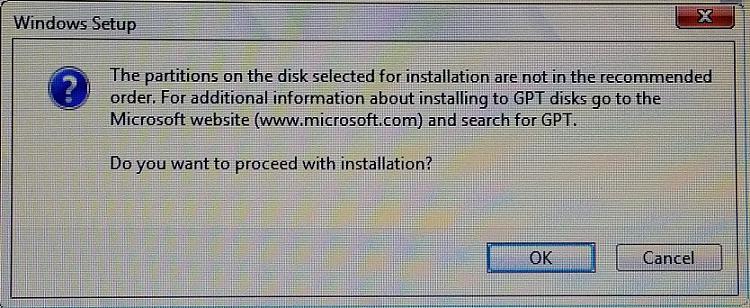New
#30
I guess I am confused as to what the "problem" is. The layout of a disk suggested by Microsoft is just that - only a suggestion - and it is the layout you would get with a default clean install of Windows 10. That, obviously, does not apply to you because you don't want the default layout, you want a custom layout. I'll have to wait to be more specific until I get home and have access to a Windows 10 computer - but essentially what you want to do is:
Assign a drive letter (either temporary or permanent) to the partition(s) that contain the WindowsRE image that you want to use and the restore image (if you have one) that you want to use. These can be in the same partition. The only requirement, I believe, is that the partition containing the WindowsRE image is on the same physical disk as the Windows installation you want to run it from. I have tried putting it on a different physical disk and couldn't get it to work.
Then you use the reagentc /setreimage and /setosimage commands to point Windows recovery to the WindowsRE and Recovery images, wherever you choose to put them. It's more just a personal preference where you put the images rather than any requirement, the important thing is that reagentc is pointing to their actual locations and is enabled.
After you have their locations set with reagentc, you can remove the drive letter(s) assigned to the partition(s) if you want to because reagentc doesn't use the drive letters except for when you set the locations.
Here's the major drawback to all of this - the WindowsRE and recovery images only work if the hard drive/SSD is not damaged. You can't use them if the hard drive/SSD crashes. So, to me, they really are next to worthless and I rely 99% on an external image for restoration and if I use a recovery stored on the hard drive/SSD it's only for convenience if I want to experiment and re-install Windows.


 Quote
Quote





